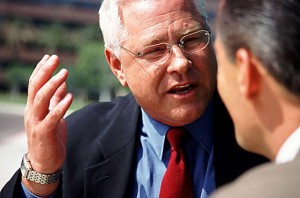Here is an excerpt from a Job satisfaction survey conducted by OPM reveals key satisfaction factors driving employee satisfaction.
Job satisfaction is fast becoming a key indicator in how agencies measure whether or not they are an “employer of choice.” The Office of Personnel Management’s (OPM) report, What Do Federal Employees Say? , indicates that 68 percent of respondents to the latest Human Capital Survey were satisfied with their jobs. This was a slightly lower percentage than found for private sector employees where, on average, 71 percent were satisfied.
When the Merit Systems Protection Board (MSPB) asked a similar question on each of its last four Merit Principles Surveys, overall job satisfaction varied only slightly—from a high of 72 percent in 1992 to a low of 67 percent in 2000. What was perhaps more noteworthy was the fact that there was considerably greater job satisfaction for employees in some agencies than in others. Given that the overall year-to-year variation in job satisfaction is small, why was there greater variation among individual agencies?
To answer this question, we analyzed the results from our Merit Principles Surveys to see if we could better understand what factors contribute to overall job satisfaction. We found three key dimensions to job satisfaction among our respondents. These are, in order of importance:
Job satisfaction is fast becoming a key indicator in how agencies measure whether or not they are an “employer of choice.”
1. The match between the person and the job.
2. The extent to which employees believe they are respected for what they do.
3. The extent to which employees believe they are well managed.
By far, the most influential factor in job satisfaction appears to be the degree to which employees think their job makes good use of their skills and abilities. This was closely followed by the extent to which employees think the work they perform is meaningful. If employees believe their work and the work of their agency is important and makes good use of their skills, there is a very high likelihood they will be satisfied with their job—even if they are not as positive about other aspects of the job.
The next major component of satisfaction appears to be whether employees believe they are treated with respect. Higher job satisfaction is associated with working conditions where employees believe their opinions count and where they receive recognition for the work they perform.
The third component of job satisfaction is related to how well an organization is managed. This component does not seem to work in isolation from job fit and respect. In other words, a well-managed organization does not translate into high job satisfaction scores in the absence of a good match between employees and the job, or under conditions where employees do not feel respected for what they do.
However, poor management can undermine job satisfaction among employees who would otherwise be content with the conditions of their employment. Put another way, while good managers by themselves do not ensure that employees will be satisfied with their jobs, poor managers can easily drive away employees who are otherwise happy with the work they do.
All of this leads back to our original question—why is there noticeable variation in employee job satisfaction scores among different agencies? Our data indicate that each of the three factors discussed above play a role. Differences in agency missions, for instance, might explain differences in overall satisfaction. Agencies that have a clear and compelling mission can probably attract applicants who believe in that mission. Those individuals then have a good chance of making job decisions that allow them to follow their interests and make good use of their talents. But keep in mind, the prospects for high job satisfaction can be easily undermined by working conditions that convey either a lack of respect for the employee or poor management.
Read the entire report.
Make sure you subscribe to our blog for additional articles and tips on job satisfaction.
Greg Smith | Lead Navigator | 770-860-9464 | Chart Your Course International
















